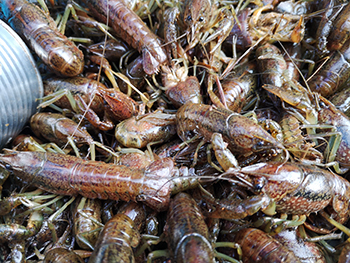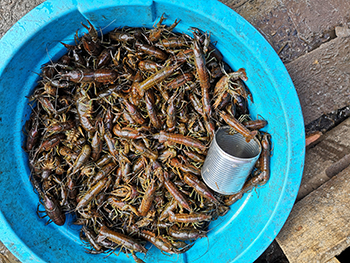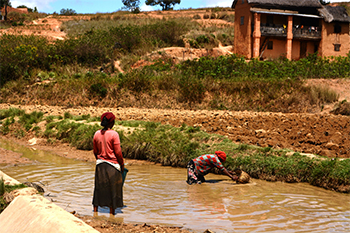More about the Marbled Crayfish
 The marbled crayfish (Procambarus virginalis) is a bizarre and fascinating animal. The entire global population contains only females: a male has never been found. Marbled crayfish are the only known decapod (the group including crabs, lobsters and prawns) which can reproduce without males. The species originated in the German aquarium trade in the early 2000s. There was immediate concern that it could cause ecological problems if it was released into the wild but at the time it was only known from captivity. Surprisingly, one of the first places it was recorded living freely was in Madagascar.
The marbled crayfish (Procambarus virginalis) is a bizarre and fascinating animal. The entire global population contains only females: a male has never been found. Marbled crayfish are the only known decapod (the group including crabs, lobsters and prawns) which can reproduce without males. The species originated in the German aquarium trade in the early 2000s. There was immediate concern that it could cause ecological problems if it was released into the wild but at the time it was only known from captivity. Surprisingly, one of the first places it was recorded living freely was in Madagascar.
 In Madagascar, marbled crayfish were first observed in markets in the mid-2000s, but were not identified until 2007. Initially confined to Antananarivo, their distribution has increased more than 100-fold. From the start, marbled crayfish were found in markets and people were observed transporting them as they are valued as food. However many people have a strongly negative views towards the species, known in Madagascar as foza orana. This fascinating article by Rowan Moore Gerety explains more.
In Madagascar, marbled crayfish were first observed in markets in the mid-2000s, but were not identified until 2007. Initially confined to Antananarivo, their distribution has increased more than 100-fold. From the start, marbled crayfish were found in markets and people were observed transporting them as they are valued as food. However many people have a strongly negative views towards the species, known in Madagascar as foza orana. This fascinating article by Rowan Moore Gerety explains more.
In 2018 the marbled crayfish genome was sequenced. This confirmed that all individuals are essentially perfect clones of each other. The marbled crayfish’s ability to reproduce clonally, high fecundity, and its ability to withstand a wide-range of environmental conditions have led to it being dubbed ‘the perfect invader’.
 The marbled crayfish is spreading very fast in Europe, East Asia and Madagascar. Zen Faulkes at the University of Texas maintains an incredibly useful website on marbled crayfish (also known as Marmokrebs). This includes a timeline of research and policies concerning marbled crayfish and a full list of research articles published.
The marbled crayfish is spreading very fast in Europe, East Asia and Madagascar. Zen Faulkes at the University of Texas maintains an incredibly useful website on marbled crayfish (also known as Marmokrebs). This includes a timeline of research and policies concerning marbled crayfish and a full list of research articles published.
